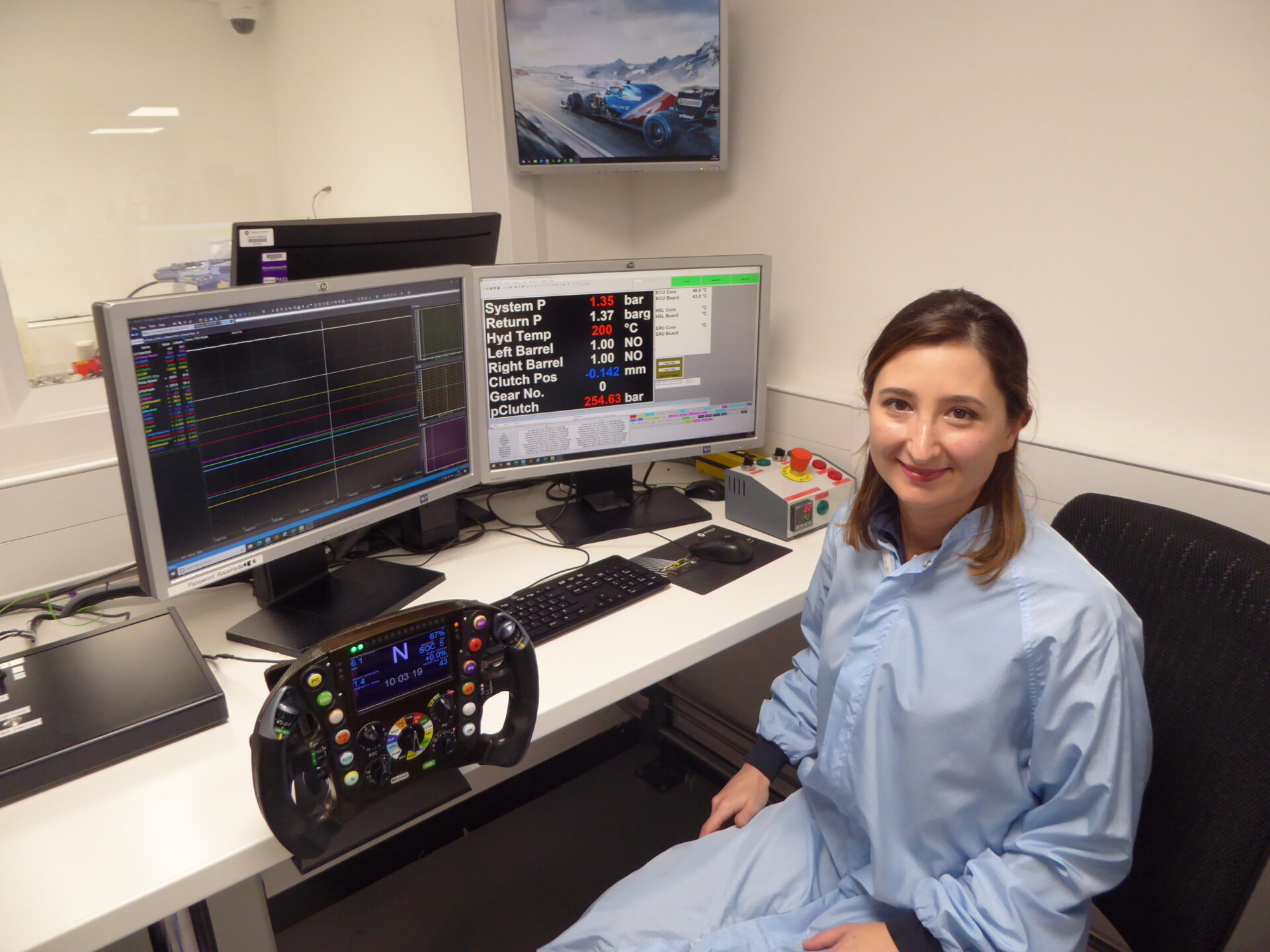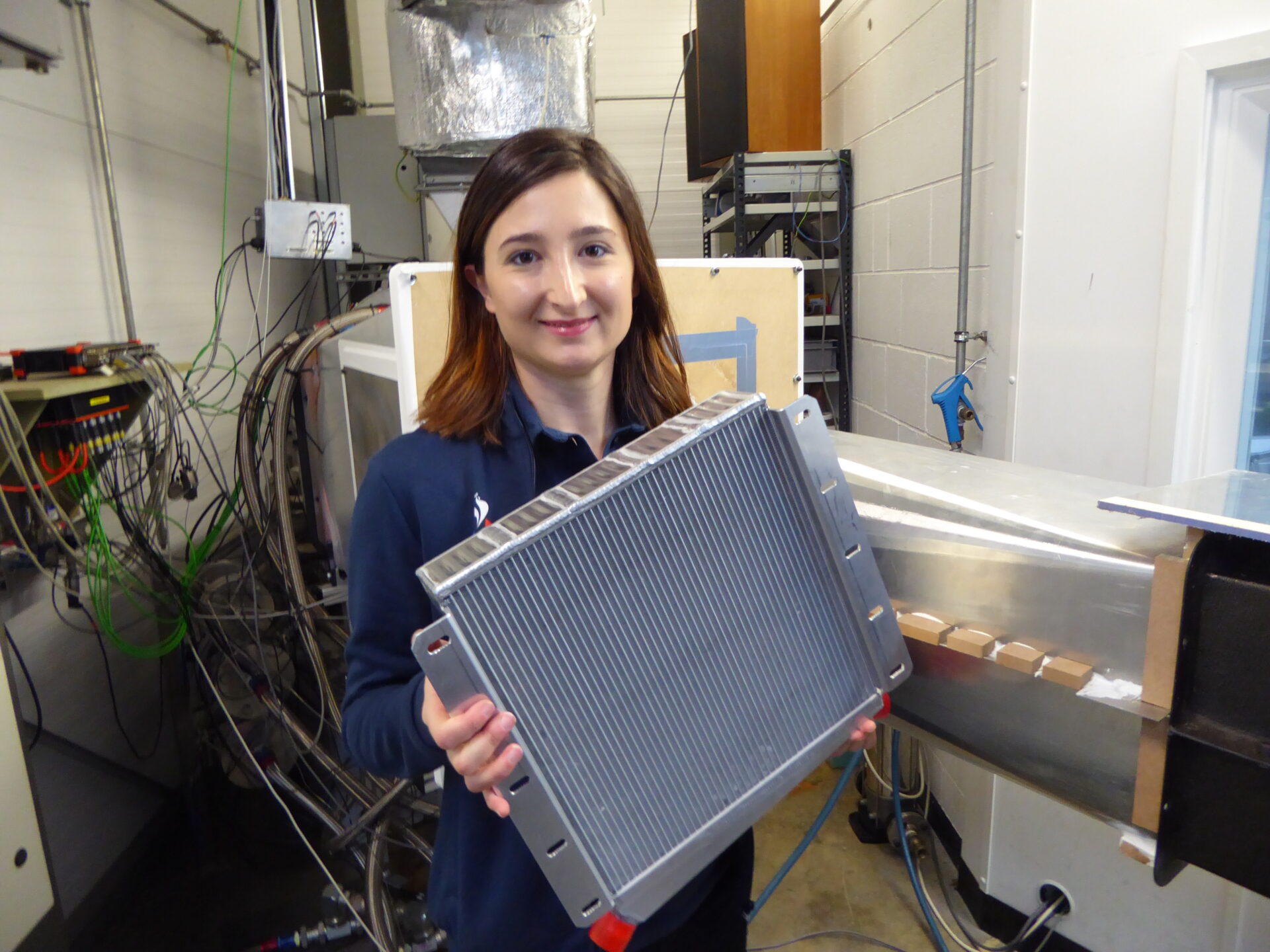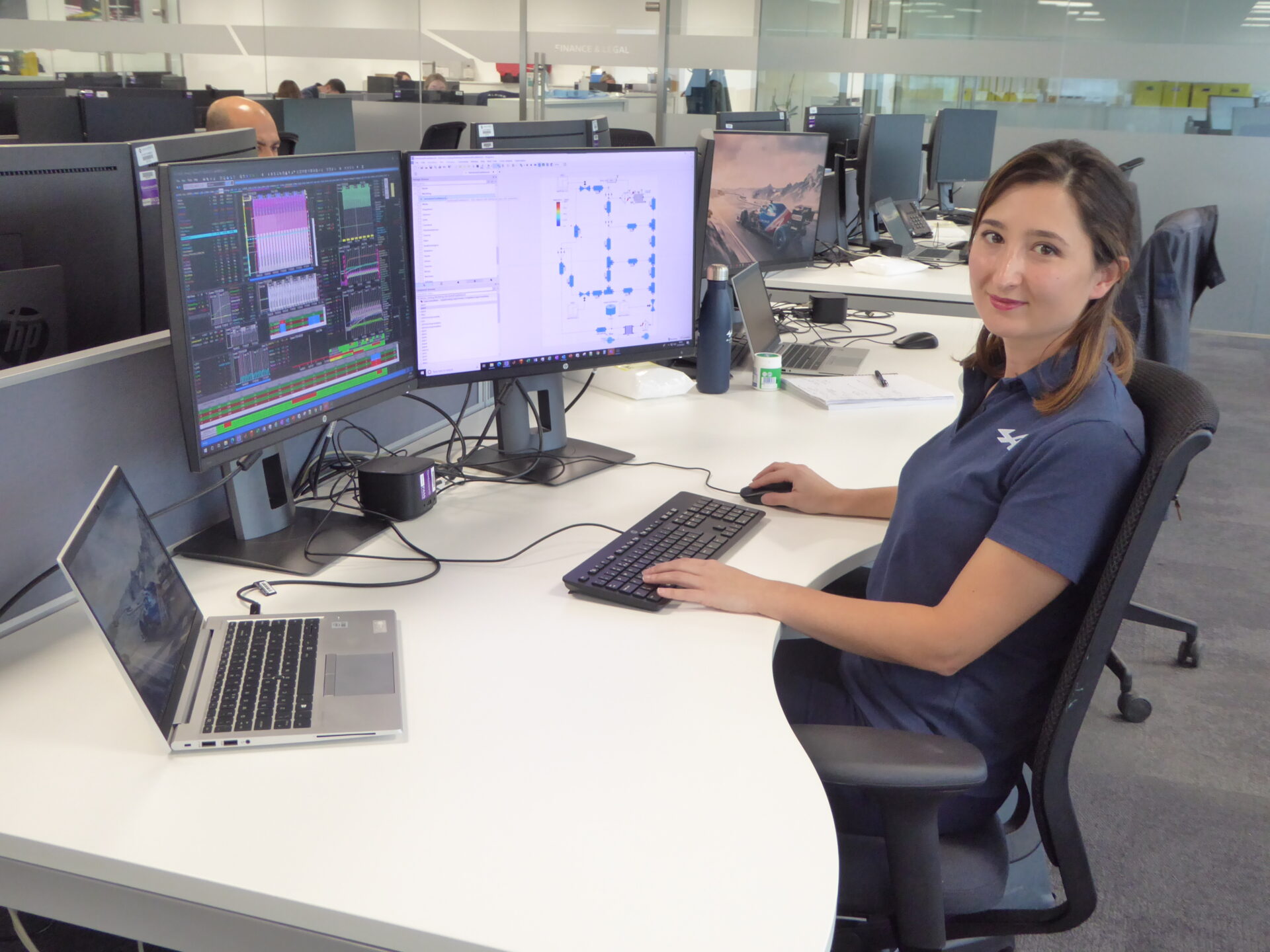Maura Gallarotti
Formula Careers takes a look behind the scenes of Alpine F1 Team and meets the inspirational ladies carving out successful careers in Formula 1.

Hi! I’m Maura Gallarotti, I’m Italian but I moved to the UK 5 years ago. I work as a Technology Simulation Engineer for the Alpine F1 team, where I follow the modelling of the thermal aspects of the car.
I’m also passionate about cycling, from road cycling to mountain bike and downhill.
How does it feel to work for Alpine F1 Team?
I feel really honoured to work for the Alpine F1 team. We have a huge heritage and even though we are not a championship winning team for now, the progress I’ve seen in these past years is staggering and I truly believe that we will get there one day. Also, witnessing a car you worked on win races is quite special!
Is it an industry you always dreamed of working in?
Getting a job in F1 can be very difficult, this is a competitive environment, so probably 99% of the people who work here have always dreamed of being in F1. In my case, I didn’t dream to be a F1 engineer when I was a kid and I could even say that I didn’t dream of becoming an engineer at all.
When I was at high school I was very good at math and physics and I really enjoyed studying these subjects, so when I had to decide what to study at university I went for engineering, probably not even knowing what I was getting myself into! It was at my university, Politecnico di Torino that I realized the beauty of engineering and all the opportunities that such a degree can give you.
In my studies both in Italy and in Sweden (at KTH) I specialized in thermodynamics and computational fluid dynamics (CFD), so when I saw a job opening at Renault F1 for a Thermodynamics CFD Engineer I immediately sent my CV and I was lucky enough to get an interview!
What subjects or courses did you study for your role?
I studied Energy and Nuclear Engineering at Politecnico di Torino in Italy and Mechanical Engineering at KTH in Stockholm, Sweden. I did several courses on thermodynamics and fluid mechanics and whenever possible I took courses in computational fluid dynamics.

Did you do any work experience or extra curricular activities?
When I was at KTH I did a project in collaboration with Öhlins to simulate parts of racing shock absorbers in CFD. After that, I also did my master thesis at ABB, where I worked on the modelling of power transformers using CFD.
How did you get your role with Alpine F1 Team?
I heard about the job opening at a dinner with some friends and I thought of trying my luck! I sent my CV and cover letter on the Renault F1 website (at the time it was Renault F1 team) and I was contacted shortly afterwards by HR.
Tell us about your role and what a typical day looks like for you
My work consists in the thermal modelling of the main systems of the F1 car, in the previous years I’ve been focusing mainly on fluids systems, but I’ll now move to the modelling of mechanical systems too.
Some of my tasks are:
- Make pre-event predictions to give trackside engineers the information needed to choose the optimum cooling spec at each event (for example, the size of the bodywork and valve settings).
2. Perform sensitivity studies for the Performance Systems Group to have a direction of development both on the chassis and Power Unit side for future cars development.
3. Test new technologies using modelling and analyse test results (when available) for model validation.

What’s the best thing about your job?
The best thing about my job is the fact that you can have a huge impact on the performance of the car. By using even simple models you can generate sensitivities to find the optimum direction of development and save a lot of time in testing.
In time you can add details to the model and perform optimization studies on any variable of the car and optimize the set-up of the car for each event.
Several components that will end up on the A522 car were first a sketch on a piece of paper on my desk! It is astonishing to see a sketch becoming a model, then a test piece and finally a part of the F1 car. I think that only F1 can offer these opportunities for engineers, because lead times are very short and innovation is key, so you have the possibility to follow the entire process from start to finish.
What’s been your biggest challenge so far?
I think one of the challenges I have to cope with is the fact that I’m not a native English speaker. Also, I’m Italian, so I’m used to a different culture, but it’s important to understand the subtleties of the British culture to work well with the others.
What’s your experience as a woman in Formula 1 been like? Have you faced any particular challenges?
F1 is a male-dominated environment, but I’ve never felt any form of discrimination for being a woman. I’m sure that years ago it was harder for women, but personally I’ve never had any issue. Clearly I’m not the typical F1 engineer and sometimes this generates curiosity, but not discrimination!
What’s the best thing you did to get you to where you are today, and what would you say to younger girls who aspire to work in Formula 1 one day?
The best thing I did has been to follow my passions and believe in myself and in my own capabilities. To the younger girls who aspire to work in F1 I would say to study hard and to look for internships in motorsport. My journey into F1 is an odd one and in general it is much easier to get a job in the field where you have already done internships or summer jobs. But the most important thing is to believe in yourself and to learn how to cope with defeats, because you will find many of these along the path but you can’t let them define your future.
Looking to gain work experience in motorsport?
Formula Careers brings you insider tips and tricks for getting experience in motorsport. Complete the guide to get your FC Certificate of Completion.
Want to keep up to date with the latest in motorsport careers and courses?
Subscribe to our mailing list.
